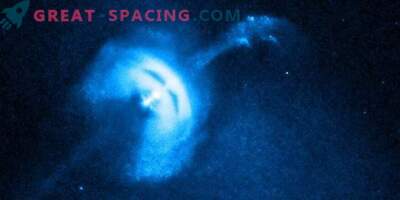
The international team of astronomers managed to find a new luminous quasar with a red shift of 7.02. The find was designated as DELS J003836.10-152723.6. Now it is the brightest quasar with a red shift of more than 7.0.
Being the most massive black holes, bright quasars with high redshift are important for astronomers because they are perceived as bright beacons that effectively reflect the chemical evolution of the Universe. These are the lightest and most remote compact objects in the observed space, so the spectrum can be used, for example, to determine the mass of supermassive black holes.
However, such high-offset quasars are extremely rare objects that are difficult to detect. At the specific moment, it was possible to find only two quasars with a redshift indicator above 7.0. This allows us to limit our understanding of the growth mechanism of supermassive black holes and the history of reionization.

Final calibrated spectrum DELS J003836.10-152723.6
New detection was performed using the photometric survey data DELS, Pan-STARRS1 (PS1) and the mission of WISE. It turns out that the absolute value of DELS J003836.10-152723.6 at a wavelength of 1450 Å from -27.1, and the bolometric luminosity is 56 trillion. sunny. These values make it the brightest quasar with a redshift of more than 7.0 today. In DELS J003836.10-152723.6 there is a black hole with a mass of 1.33 billion solar. She is acclimatized in the Eddington limit with a coefficient of 1.25. To grow such a black hole with a redshift of 7.0, you need to have a massive black hole, a super-Eddington accretion or extremely low radiation efficiency.
In addition, astronomers found out that the wide emission line of the Civ quasar is shifted to blue by more than 3000 km / s to the systemic redshift. Conclusions suggest that we are confronted with the first quasar found in the epoch of reionization with such powerful relativistic outflows. Therefore, scientists intend to continue to investigate it in X-ray and millimeter-wave observations.











































